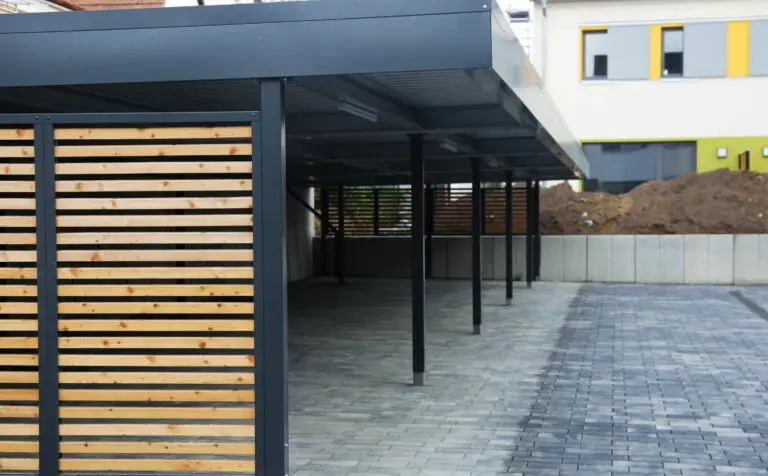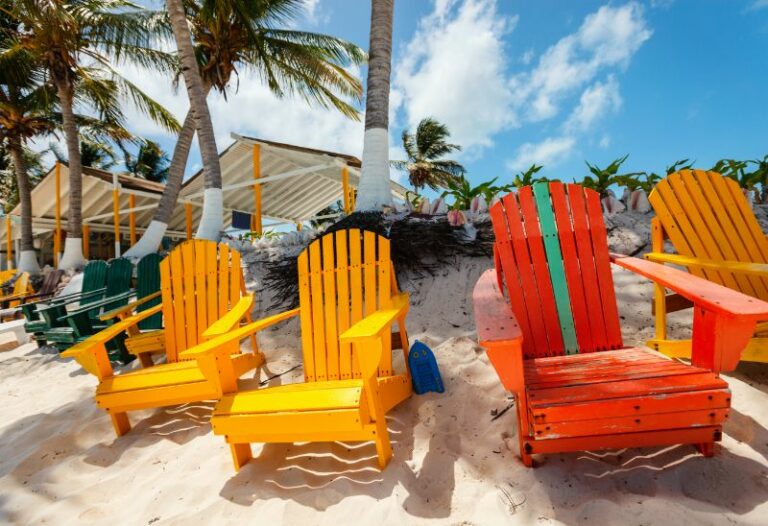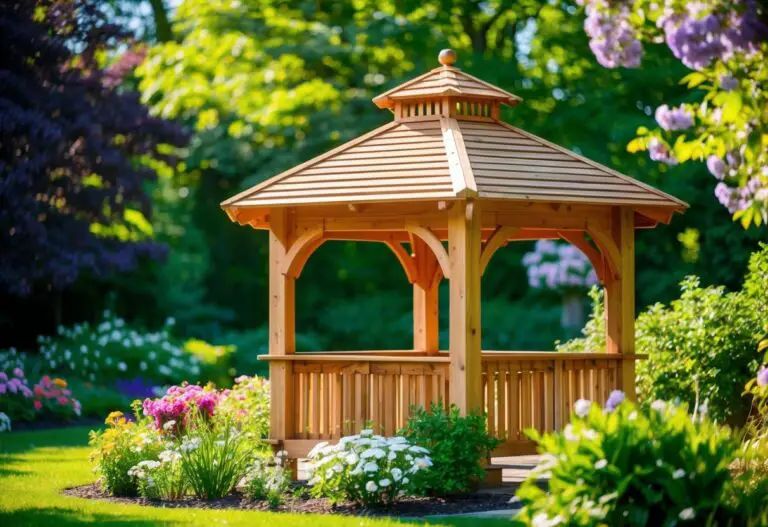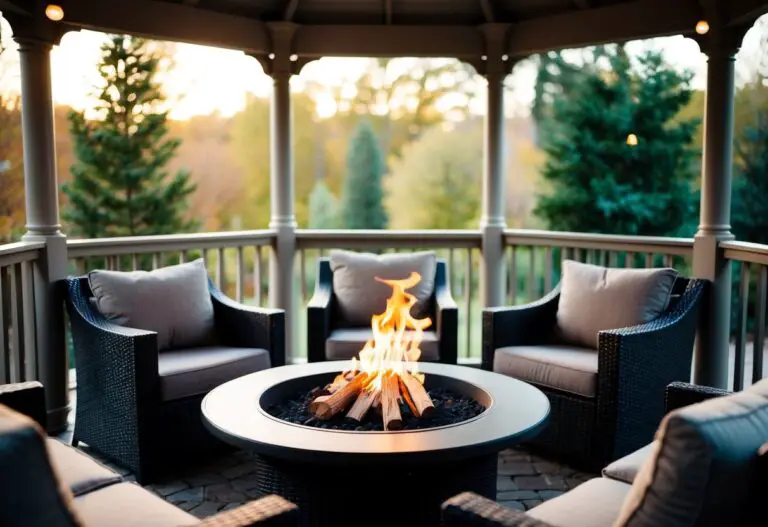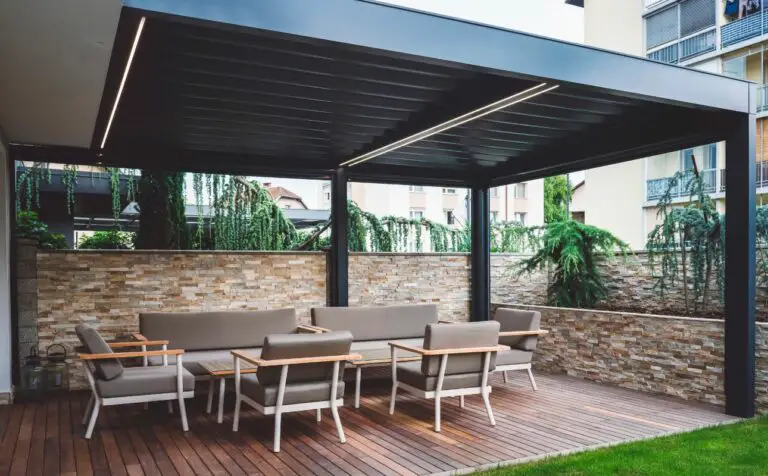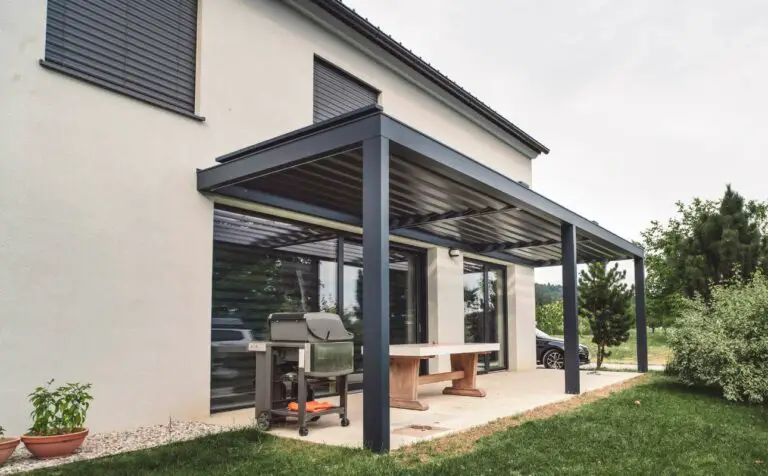One of the primary reasons people choose to install a pergola is to provide shade during the hot summer months. Especially to block the sun.
Though pergolas block sun is not straightforward as it depends on various factors such as the position of the structure and materials used for its construction.
The amount of shade a pergola provides can vary depending on its design, material, and placement. While some pergolas may provide ample shade, others may only offer partial coverage or none at all.
We’ll dive into these details and explore how pergolas can impact the amount of sunlight reaching your outdoor space.
Also, the benefits of pergolas as a shade-providing structure, help you make an informed decision when it comes to enhancing your outdoor living space.
So, let’s get started!
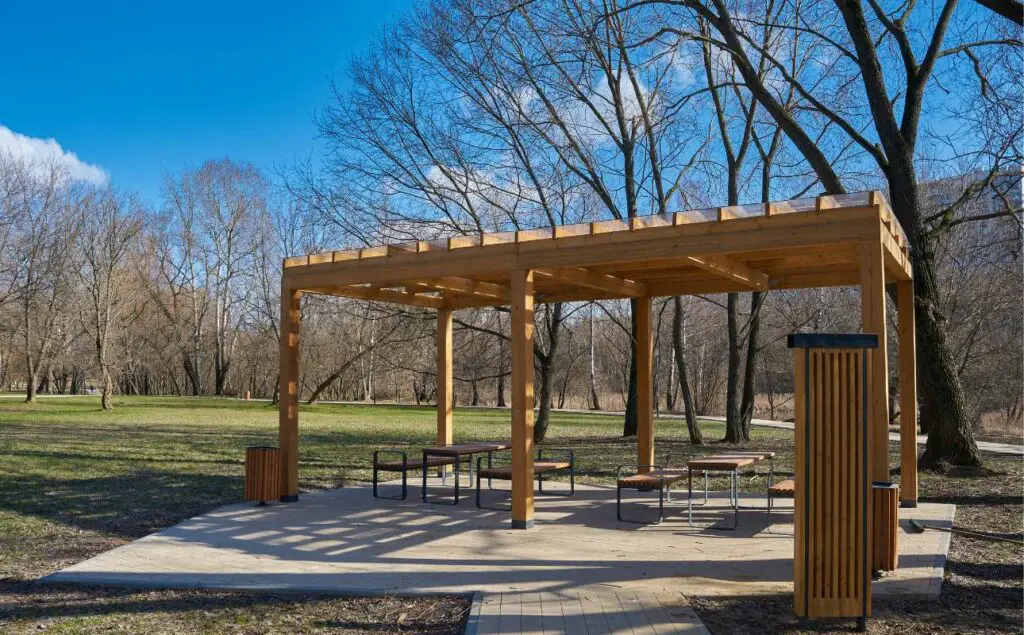
Types of Pergolas
When it comes to choosing a pergola, there are many options available. Here are some of the most popular types of pergolas:
- Freestanding Pergolas
Freestanding pergolas are not attached to a house or any other structure. They are often placed in the middle of a garden or patio, providing a beautiful focal point and a shaded area for seating or dining.
- Attached Pergolas
Attached pergolas are connected to a house or other structure, providing a seamless transition from indoor to outdoor living space. They can also be used to create a covered walkway or a shaded area for outdoor cooking or dining.
- Gabled Pergolas
Gabled pergolas have a peaked roof that adds a touch of elegance and sophistication to any outdoor space. They are particularly well-suited for larger gardens or patios and can provide ample shade and protection from the elements.
- Sail Pergolas
Sail pergolas, also known as shade sails, are a modern and minimalist option for those who want to add shade to their outdoor space without sacrificing style. These pergolas consist of a sail-like canopy that is suspended from poles, providing a sleek and contemporary look.
Materials for Pergolas
Pergolas can be made from a variety of materials, each with its own unique advantages and disadvantages. Here are some of the most popular materials for pergolas:
- Wood
Wood is a classic and timeless material for pergolas, providing a natural and rustic look. Cedar and redwood are particularly well-suited for outdoor use, as they are resistant to rot and decay.
- Vinyl
Vinyl is a durable and low-maintenance material for pergolas. It is resistant to rot, insects, and decay, making it a great option for those who want a long-lasting structure that requires minimal upkeep.
- Metal
Metal pergolas are strong and durable, with options such as aluminum and steel. They can be painted or powder-coated to match any outdoor décor.
- Fiberglass
Fiberglass is a lightweight and strong material that is ideal for pergolas. It is resistant to weather and insects, making it a great option for outdoor use.
How Pergolas Provide Shade?
Pergolas are a popular choice for adding shade to outdoor living spaces. Here’s how pergolas provide shade:
- Shade from the roof
Most pergolas have an open roof structure with slats or beams that provide partial shade. The spacing of the slats or beams can be adjusted to allow more or less sunlight to filter through, depending on your preference.
- Shade from plants
Many homeowners choose to grow plants, such as vines or climbing flowers, on their pergolas. As the plants grow, they provide additional shade and create a beautiful, natural canopy.
- Shade from drapes or curtains
Some pergolas come with drapes or curtains that can be drawn to provide additional shade and privacy.
- Shade from accessories
There are a variety of accessories that can be added to a pergola to provide shade, such as retractable awnings, canopies, or umbrellas.
Maximizing Shade with Pergolas
Here are some tips for maximizing shade with your pergola:
- Choose the right material
Some materials, such as wood and metal, are better at providing shade than others. Consider the amount of shade you want and choose a material that will provide the desired level of coverage.
- Choose the right plants
If you plan to grow plants on your pergola, choose ones that are well-suited to your climate and will provide ample shade.
- Adjust the slat spacing
If your pergola has slats or beams, adjust the spacing to allow more or less sunlight to filter through, depending on your preferences.
- Add accessories
Consider adding accessories, such as drapes, curtains, or awnings, to provide additional shade and privacy.
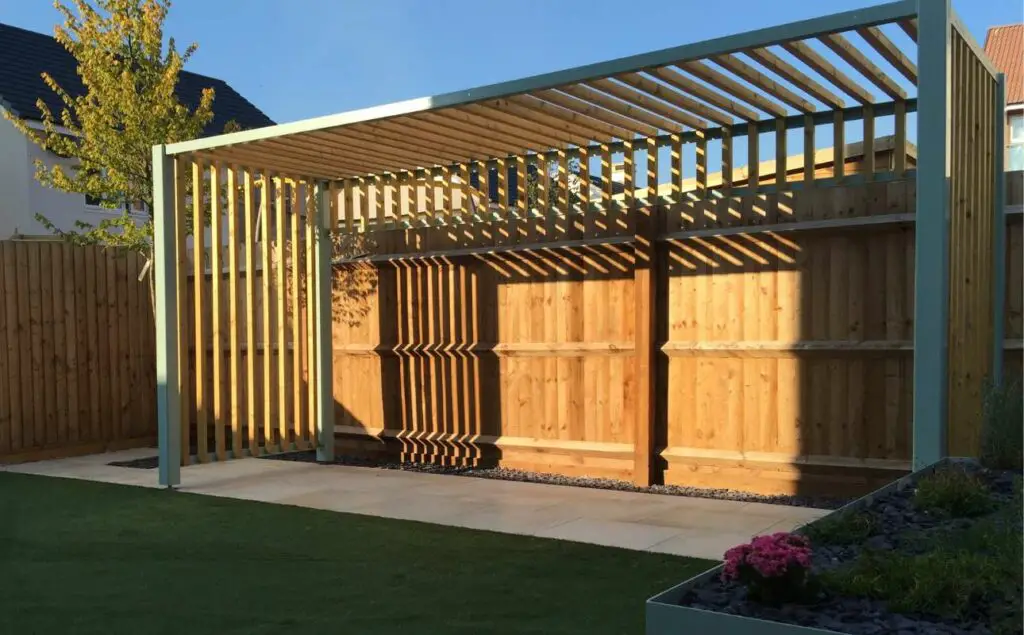
Factors Affecting Shade Provided by Pergolas
While pergolas are a great way to add shade to your outdoor living space, there are several factors that can affect the amount of shade provided.
Here are some of the most important factors to consider:
- Pergola design
The design of your pergola will have a significant impact on the amount of shade it provides. Pergolas with closer slat spacing or a solid roof will provide more shade than those with wider slat spacing or an open roof.
- Material
The type of material used for your pergola can also affect the amount of shade provided. Materials like metal or vinyl tend to reflect more sunlight than wood, which can result in less shade.
- Placement
The placement of your pergola can also affect the amount of shade it provides. Pergolas placed in direct sunlight will provide less shade than those placed in a shaded area.
- Orientation
The orientation of your pergola can also impact the amount of shade provided. Pergolas facing south will provide more shade during the hottest parts of the day, while those facing north will provide less shade.
- Plants
If you plan to grow plants on your pergola, they can also affect the amount of shade provided. Plants that are dense and cover more of the pergola will provide more shade than those that are sparse.
Benefits of Pergolas in Providing Shade
Pergolas are a popular choice for providing shade in outdoor living spaces. Here are some of the key benefits of using pergolas to provide shade:
- Enhanced Comfort
Pergolas provide a comfortable and shaded area for outdoor seating and entertaining, allowing you to enjoy your outdoor space even during the hottest parts of the day.
- Improved Aesthetics
Pergolas can enhance the beauty of your outdoor space, adding a touch of elegance and sophistication. With a variety of materials, designs, and accessories available, you can customize your pergola to match your home’s style and your personal preferences.
- Increased Property Value
Installing a pergola can increase the value of your property by adding an attractive and functional outdoor living space.
- Protection From The Elements
Pergolas can provide protection from the sun, wind, and rain, allowing you to enjoy your outdoor space in all types of weather.
- Customizable Shade
With the ability to adjust the spacing of slats or beams, grow plants, or add accessories like curtains or awnings, pergolas offer customizable shade options to meet your specific needs and preferences.
- Energy saving
By providing shade to your home’s exterior, pergolas can help reduce cooling costs by keeping your home cooler during the summer months.
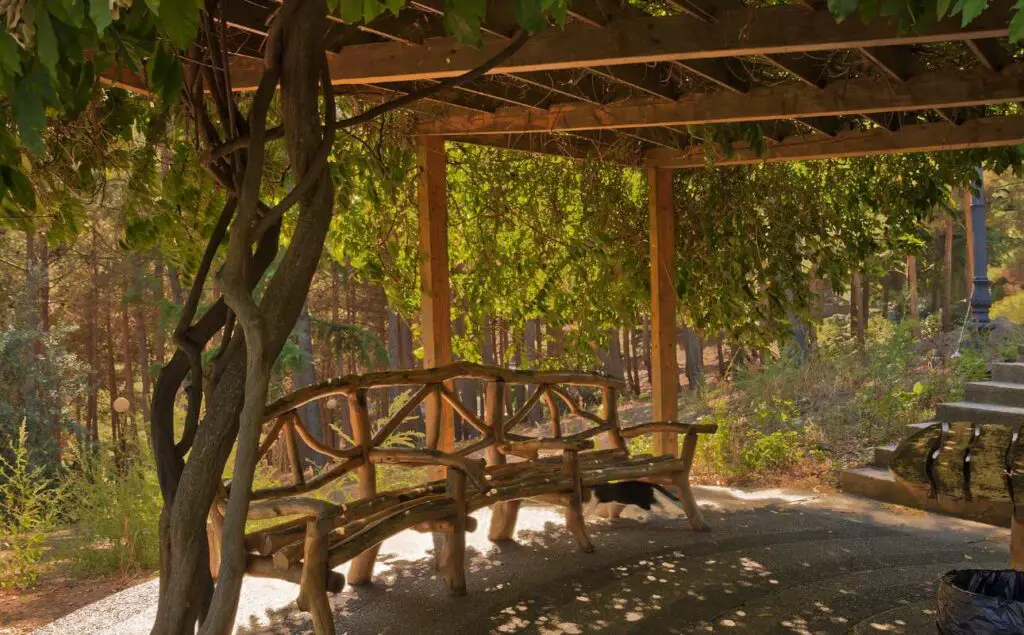
The Impact Of Pergolas On Sun Exposure
Who doesn’t love a sunny day? The warmth on your skin, the brightness in the sky it’s just so invigorating. But there are times when you need to take measures to protect yourself from too much sun exposure. This is where pergolas come into play.
While pergolas do not completely block out the sun, they can help regulate its impact on your outdoor space. In fact, this type of structure provides an ideal balance between enjoying the benefits of sunlight and taking necessary sun protection measures.
By installing a pergola over your patio or deck, for example, you can create shade while still allowing natural light to filter through. You’ll be able to enjoy your outdoor activities without having to worry about harmful UV rays.
In addition to providing some relief from direct sunlight, a well-designed pergola can also enhance the look and feel of your outdoor living area. It adds architectural interest and visual appeal that can make spending time outside even more enjoyable.
Plus, with various styles and materials available today, you’re sure to find one that suits both your aesthetic preferences and functional needs.
So why not consider adding a pergola to your backyard oasis? Your skin (and eyes) will thank you!
How To Balance Shade And Sunlight?
Balancing aesthetics and functionality is key when choosing foliage for your pergola.
When it comes to selecting plants to grow on your pergola, consider those with large leaves such as grapevines or wisteria. These will provide ample shade without completely blocking out the sunlight.
Additionally, you may want to choose a plant that blooms at different times throughout the year so that you can enjoy varying degrees of shade and sunlight depending on the season.
Remember, it’s all about finding the perfect balance between form and function for your outdoor space!
Additional Tips For Maximizing Sunlight
Let’s talk about painting pergolas and adding vines; both are great ways to maximize sunlight in your outdoor space.
Painting pergolas can help reflect the sun’s rays while adding vines can help create a shady area without blocking too much light.
Painting Pergolas
With the right painting techniques and color choices, you can create a bright and airy atmosphere that still provides ample shade from harsh UV rays.
Consider using light colors like white or beige to reflect more light and keep things cool during the hot summer months.
You may also want to experiment with different textures or patterns for added
Adding Vines
Adding vines to your pergola can provide both shade and visual interest. When choosing suitable vines, consider those that grow well in your climate and won’t damage your structure.
Some popular options include grapevines, wisteria, and climbing roses. Keep in mind that maintaining vines requires regular pruning and cleaning to prevent overgrowth or damage.
The Bottom Line
Pergolas can provide varying degrees of shade depending on the design and placement. They are not limited to being made solely of wood and can be customized with different materials such as metal or vinyl.
A pergola can have an impact on the temperature of an outdoor space by reducing heat absorption.
While pergolas are commonly used in summertime, they can also be utilized year-round for their aesthetic appeal and functionality.
With the right pergola, homeowners can create a beautiful and comfortable outdoor living space that they can enjoy year-round. That not only gave you shade but also protect you from sun rays.
